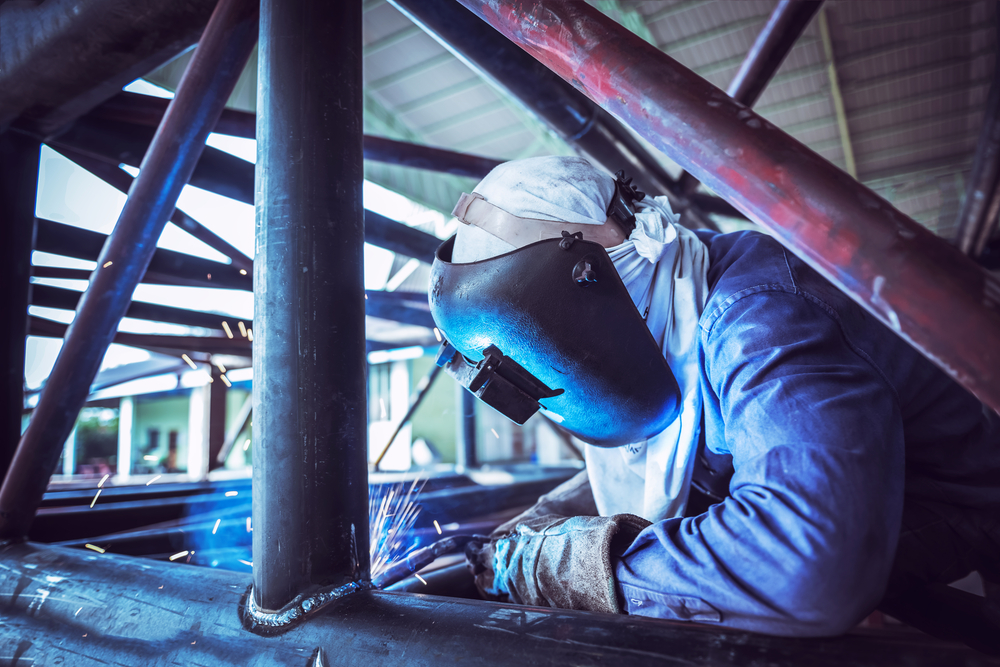When creating sturdy, long-lasting structures, steel emerges as the undisputed hero. Steel is the backbone of modern construction, and understanding the ins and outs of structural steel fabrication is essential for ensuring the safety and reliability of buildings, bridges and more.
In this simplified guide, we will take you through the fascinating world of structural steel fabrication. From crafting meticulous designs to the skilled hands that shape and weld steel pieces together, we will demystify the entire process for you. By the end of this article, you’ll gain a newfound appreciation for the meticulous planning and craftsmanship that goes into every steel structure.

Structural Steel Fabrication Design: Crafting The Blueprint
When discussing creating anything from steel, it all starts with a plan. Think of it like baking a cake—you need a good recipe first. In structural steel fabrication, this recipe is the design and detailing. Engineers use their computers to draw up a design that’s not just nice to look at but strong and safe, too. They plan every little piece, from the biggest beam to the smallest screw, making sure they all fit together perfectly.
Selecting The Right Materials: Ensuring Quality Ingredients
Just like choosing the best ingredients for a cake, picking the right steel is super important. The final structure’s strength and how long it’ll last depend on this choice. Experts test different types of steel to find the one that’s strong enough for the job but won’t break the bank. They’re looking for a balance, to make buildings that are safe and can stand tall for many years.
Precision Cutting And Shaping: Preparing Components
Once the steel is chosen, it’s time to shape it. This is where big machines use laser or plasma beams to cut the steel with amazing precision. Imagine using a super-accurate cookie cutter for steel. Each piece is cut to match the design perfectly, ensuring nothing goes to waste.
Expert Welding Techniques: Seamlessly Joining Pieces
Welding is where the true artistry of structural steel fabrication is witnessed. Welding is a bit like gluing pieces together, but with steel, it’s a lot more complex. Welders are artists in their own right, skillfully melting and fusing steel parts so they stay united. The welding has to be just right for the type of steel and the job it will do, making sure the final structure will be safe and sturdy.
Thorough Quality Control: Ensuring Top-Notch Work
Checking the work done is crucial. At every step, from the first cut to the final weld, the steel is checked and double-checked. Inspectors use all sorts of tools to find any mistakes that could cause problems later. It’s like proofreading an essay—you want to catch any errors before it’s turned in.
Steel Protection Through Surface Preparation: Coating The Steel
Before the steel goes outside, it needs a coat. Like you’d paint a bike to prevent rust, steel structures get a special coating. That keeps the steel safe from rain, snow and other harsh weather, ensuring it lasts as long as possible.
Efficient Assembly And Erection: Bringing It All Together
After everything’s cut, welded and painted, it’s time to put all the pieces together. That is when you can start to see the steel skeleton of a building come to life. Cranes and skilled workers lift and fit the parts in place, just like building a giant metal puzzle.
Thorough Testing And Commissioning: The Final Verification
Before a steel structure is all done, it has to pass a final test. That is like the final exam for the building. Engineers ensure everything is built right and strong enough to do its job. They go through a checklist to ensure nothing is missed, and the building is ready to be used.
Key Strategies For Structural Steel Fabrication Success
- Ensuring Top Quality- Quality control tops the list of best practices in robust structural steel fabrication. Companies follow strict rules to make sure they do a good job. Regular checks and sticking to international standards help make sure the steel parts are top-notch every single time.
- A Team of Pros- None of this would be possible without the people who know steel like the back of their hand. These pros have been in the game for years and have the skills to take a design and make it real. Their hands and minds ensure that every steel piece does what it’s supposed to do.
- The Foundation of Success- Before any actual building starts, there needs to be a solid plan. Good planning can spot problems before they happen and a good design includes solutions for these problems. This step is all about thinking ahead.
- Keeping the Steel Safe- Just like you wouldn’t leave your tools out in the rain, steel needs to be kept safe before it’s used. Proper storage keeps the steel in good shape until it’s time to turn it into a building. It’s all about keeping the steel clean, dry and ready for action.
- The Priority on Site- Making things from steel can be dangerous work. That’s why safety rules are super important. Every step of the way, from the factory to the building site, workers follow safety guidelines to keep everyone safe.
- Making Sure It’s A-OK- Quality assurance goes hand-in-hand with quality control, involving a systematic process of checks and balances that guarantee the structural steel fabrication meets the required standards.
- The Importance of Records- Keeping records is a big deal. By writing down what happens at each step of the steel-making process, companies can look back if they need to and see every detail. This helps keep track of the quality and ensures everyone knows what went into the building.
- Caring for Our Planet- Nowadays, we have to think about our planet when we build. That means using steel in a way that doesn’t hurt the environment too much. Companies try to use less energy, make less waste and pick materials that won’t harm the earth.
- Testing the Limits- Before a steel structure is good to go, it needs to show it can handle the pressure—literally. It goes through tests to prove it can carry the weight it needs to. It’s like proving it’s strong enough for the heavy lifting it will do.
- Moving Steel to Site- Lastly, after all the pieces are made, they must get to the building site. That involves much planning to move big, heavy steel parts safely. It’s a big job, but with careful planning, the steel gets where it needs to go, ready to be turned into a new building or bridge.
FAQs On Structural Steel Fabrication
What is structural steel fabrication?
Structural steel fabrication is a manufacturing process where steel is cut, bent and assembled to create structural frames.
Why is quality control essential in steel fabrication?
Quality control ensures that the products meet the required standards and specifications, ensuring the safety and longevity of the structures.
Can structural steel be recycled?
Yes, structural steel is highly recyclable, making it an environmentally friendly option for construction.
Partner with Bigfoot Pipe & Piling For Your Steel Needs!
Ready to elevate your construction projects with top-quality steel? Connect with Bigfoot Pipe & Piling today! Our expertise in structural steel fabrication guarantees durable, safe and cost-effective solutions. Don’t miss out on the opportunity to build stronger and smarter. Contact us now, and let’s shape the future together.
